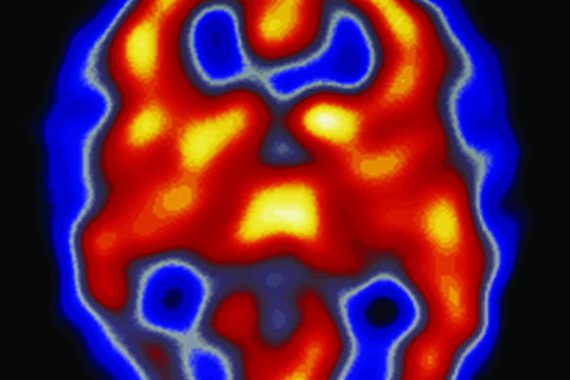NICE has recommended a new treatment for migraine prevention that around 200,000 patients in the UK could be eligible for.
Galcanezumab, known as Emgality, is a monthly injected treatment for the prevention of migraine in adults with both chronic or episodic migraine.
The treatment is now recommended for those who have four or more migraine days a month and have tried at least three preventive drug treatments unsuccessfully.
NICE has estimated that ‘around 144,000 people with episodic migraine and 59,000 people with chronic migraine may be eligible’ for the treatment, according to pharmaceutical company Lilly.
Clinical trials comparing galcanezumab with a placebo found that it halved the number of monthly migraine headache days for up to 40% of adults who had previously tried three or more preventative medicines for migraine, Lilly added.
However, NICE said that the long-term benefits of the treatment ‘compared with best supportive care remained uncertain’.
The NICE guidance said: ‘Treatment options for preventing episodic or chronic migraine include beta-blockers, antidepressants and anticonvulsant drugs.
‘For migraine that has not responded to at least three preventive treatments, clinical trial evidence shows that galcanezumab works better than best supportive care in both episodic and chronic migraine. It is plausible that galcanezumab may work better than botulinum toxin type A.’
It added that there is ‘an unmet need for migraine-specific treatments’, compounded by the pandemic.
It said: ‘Face-to-face appointments are currently restricted in the NHS because of the Covid‑19 pandemic, so there is a greater demand for virtual appointments.
‘The committee understood that this has reduced the availability of botulinum toxin type A and increased the need for a migraine-specific self-administered treatment that could be managed with virtual appointments.’
Patients can self-inject galcanezumab via an autoinjector pen following instructions provided but ‘after training’ and ‘if a healthcare professional determines that it is appropriate’, according to the summary of product characteristics.
The treatment is to be injected in the abdomen, thigh, back of the upper arm, or in the gluteal region, it added.
A spokesperson for Lilly told Pulse that ‘comprehensive instructions for administration are given in the Package Leaflet and Lilly provides additional educational materials including a video’.
They said galcanezumab can be prescribed by physicians ‘experienced in the diagnosis and treatment of migraine’, including GPSIs, although it is ‘likely’ to be managed in secondary care.
The NICE guidance added that some people, such as the disabled, those with a learning disability, older people or those with a phobia of needles, may not be able to self-administer the injection.
It said: ‘Additional services may be needed to train people how to self-administer treatment.’
The most common side effects – affecting more than one in 10 people – are reactions at the site of injection, such as pain, redness, itching, bruising or swelling, according to the product summary document.
Other common side effects listed include vertigo, constipation, itching or a rash.
The NICE guidance added that galcanezumab’s list price is £450 per 120‑mg injection excluding VAT, but that a commercial arrangement is in place to make the treatment ‘available to the NHS with a discount’.
GP headache specialist at the National Migraine Centre (NMC) and council member for the British Association for the Study of Headache (BASH) Dr Katy Munro told Pulse she is ‘delighted’ by the news.
She said: ‘The availability of a medication specifically tailored to target the pain neurochemical, Calcitonin gene related peptide, responsible for a lot of migraine attacks, is an exciting new addition to our options to help patients with this debilitating genetic, neurological disorder. We have seen some very encouraging results and the side effects are generally low.
‘It is a costly medication and of course, a word of caution – nothing works for everybody sadly. [But] when they do work, the improvement seems to also be not just in the headache but also in brain fog, fatigue and the other symptoms that so often occur with migraine attacks.’
However, she added that she fears NHS neurology clinics ‘may be overwhelmed with referrals’ and there are ‘not enough’ headache specialists in the UK currently.
She said: ‘The NHS is currently under great strain and waiting lists for outpatient neurology appointments were already long.
‘Migraine management can be done very well by trained GPs with a special interest and only needs secondary care specialists in more complex cases really.’
Dr Richard Wood, GP educator in headache for Bucks and Oxon and NMC headache specialist, added: ‘To have preventative therapies developed specifically with migraine pathophysiology in mind gives migraine the attention it needs and deserves. We are even more delighted that its licencing opens up these therapies to a larger eligible population than only those with chronic migraine.
‘Of course, local commissioners still have some discretion on delivery, and the task ahead is now for providers and commissioners to decide who this can be delivered within their headache pathways and existing budgets.’
In 2017, a study found that a new injected drug – the first fully human monoclonal antibody targeting the calcitonin gene-related peptide (CGRP) receptor – substantially reduced migraine symptoms.
Pulse July survey
Take our July 2025 survey to potentially win £1.000 worth of tokens













£450 (per month) x 12 (months) x 200;000 (people) is over a billion £s (per annum), just for the medication?
Nice NICE!
Does it work for chronic tension headache labelled as migraine?
I think you’re onto something there, Dave.
I know some patients who could benefit
All have tried b blocker, topiramet, sodium valproate
Pizotifen with no benefit and some using injectable triptans in acute episode several times .
40% get benefit is better than nothing Do you really need secondary care to diagnose migrain ? primary care gp should be allowed on prescribe.